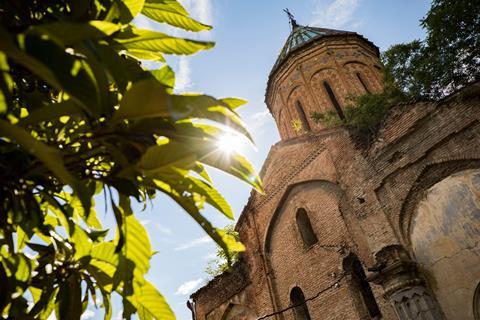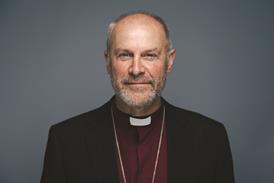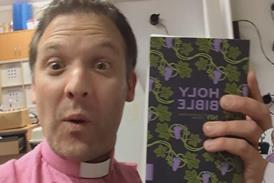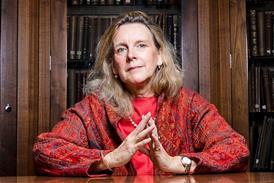More than half a million baptised Catholics left the church in Germany last year, according to recently released figures. But what’s the general state of faith across mainland Europe? Declan McSweeney reports

Why is German church attendance hitting the headlines?
New figures from the German Bishops’ Conference have shown over half a million people left the Catholic church in 2022, and that figure rises to 700,000 if you include deaths.
It’s significant as Germany is Europe’s wealthiest country, the heartland of the Reformation and historically home to large Catholic and Lutheran populations.
Dwindling membership means the Catholic Church may have to give up a third of its properties, with churches potentially facing demolition.
Is the Catholic Church the only one affected in Germany?
No, the Evangelische Kirche in Deutschland, or EKD (Evangelical Church in Germany) is also facing serious decline, reporting that their membership fell by 2.9 per cent last year.
In a decline that mirrors trends in the UK, church weddings are also falling. In 1953, 80 per cent of weddings were held by either of the main Christian churches, but in 2019 this had fell to just 18 per cent.
What is causing the decline?
There’s a range of opinions.
Some have argued the decades-long secularisation of European society has been exacerbated by the child abuse scandals.
A 2018 report found that at least 3,677 people were abused by Catholic clergy between 1946 and 2014. More than half the victims were 13 or younger, and at least a third had been altar boys.
It is also possible that the Covid pandemic, which left churches closed for a prolonged period, may have contributed to the latest figures.
Is this phenomenon confined to Germany?
No, while the German figures are easier to obtain because of the nation’s church tax system, the secularisation trend can be seen across many parts of Europe.
In France, a 2021 poll showed over half the population are either atheist or consider Christianity to be irrelevant. The percentage saying they are Catholic fell from 81 per cent in 1986 to 47 per cent in 2020, while those saying they had no religion grew from 16 per cent to 40 per cent.
In 1970s Netherlands, 39 per cent said they were Catholic, but this had fallen to 23 per cent by the mid 2010s. The number of Calvinists and Methodists halved during the same period.
In Italy, in 2020, there were about 12 million citizens attending a house of prayer at least once every week, around 6 million worshippers fewer than a decade earlier.
In Spain, a third of the population is atheist or agnostic, in what was a strongly Catholic land in the days of Franco.
Poland has been synonymous with Catholicism. How is faith faring there?
The faith sustained its people through the dark days of Nazi invasion and later Communist rule.
The rise of the Solidarity union, led by Lech Walesa, was closely linked to the Church and drew great encouragement from the election of Pope John Paul II, whose consistent challenge to the Marxist regime was praised by Ronald Reagan and was seen as a morale booster in the shift to democracy there.
However, today’s Poland is a very different matter, with church attendance well down among young people, though over 90 per cent of Poles still identify as being Catholic.
Is anything replacing traditional religious practices?
Alternative baby naming ceremonies are gradually becoming more common, replacing the traditional baptisms.
The number of civil weddings outstripped Catholic ceremonies for the first time in Italy in 2018 (by comparison, this happened in the UK in 1992).
Is it all doom and gloom, then?
No, there are some positive signs.
In France, despite the wider secularisation of society, the number of evangelical Christians has grown from 650,000 in 2017 to 745,000 last year, according to the National Council of Evangelicals of France.
While some of this growth is down to immigration, particularly from former colonies in Africa, it is also a feature of the indigenous population, with Assemblies of God becoming the largest evangelical church in France.
There are many evangelical church planting movements which are active across mainland Europe.
"A new era of evangelism" was heralded at last week’s Empowered 2023 conference in Amsterdam. More than 5,000 individuals from over 125 nations attended the conference, which was backed by Luis Palau Association and Billy Graham Evangelistic Association.
Among the Romany Gypsy population, the Light and Life Church was founded in France and has since spread to many parts of Europe, including the UK.
Are immigrants helping to revive Christianity in Europe?
The growth of immigrant-led churches, particularly those associated with African migrants, is by no means confined to the UK. It is found in France, Germany, Belgium, the Netherlands, Ireland, Spain, Sweden and many other parts of Europe.
Before war broke out, one of the largest churches in Ukraine was led by a Nigerian pastor, Sunday Adelaja.
In most large European cities one finds churches with services in Chinese, Korean, Tagalog and various Indian languages. Last year, the Italian Chinese Theological Seminary opened its doors.
In Sweden and other Scandinavian countries, the historically tiny Catholic minorities are growing due largely to immigration from both within and outside Europe, though conversions are also a factor.
Does going in a more liberal direction help or hinder?
This question continues to be hotly contested.
Judging from the experience of the Lutherans in Germany, going in a more liberal direction does not boost numbers. But equally, the experience of the Catholic Church in Poland and Ireland, which has a long tradition of conservative positions on sexual matters, does not inspire confidence.




































No comments yet